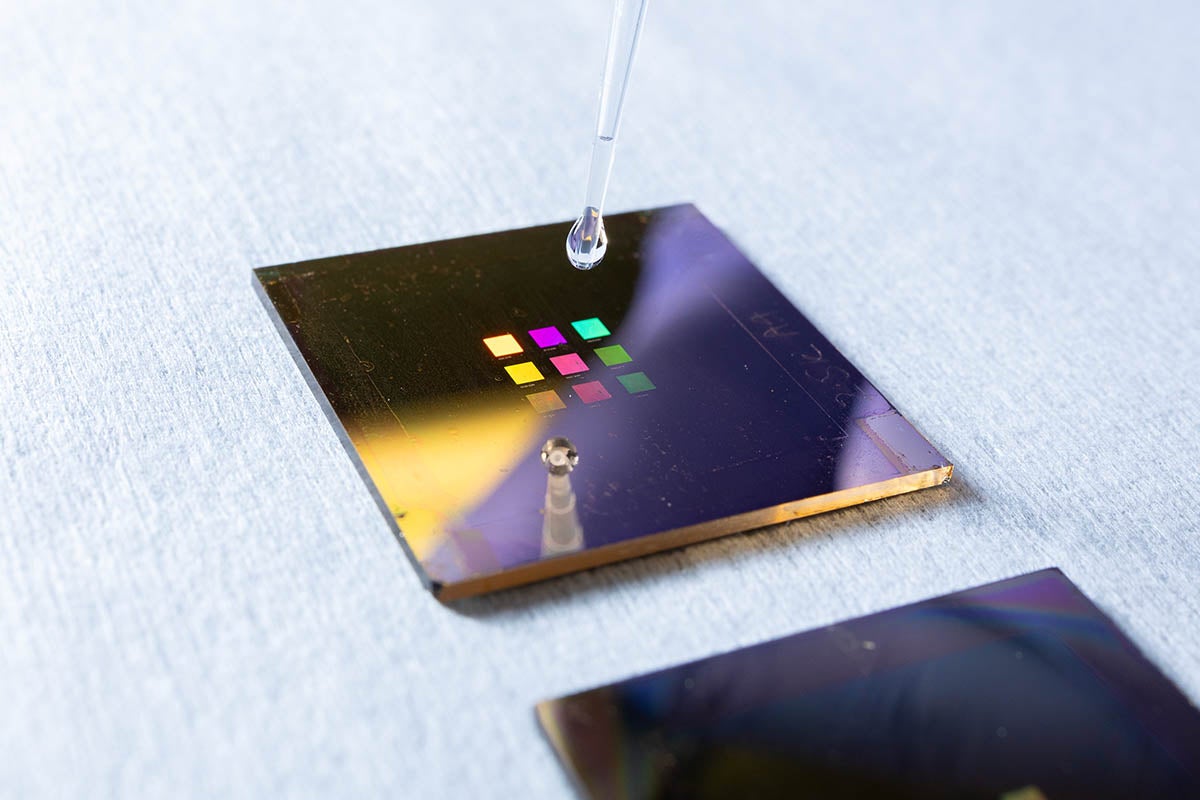Promising UCF technology is illuminating new ways to examine molecules with precision, an advancement that can help enhance drug development and new therapies.
The new technology, a plasmonic platform that significantly improves the detection of the chirality of molecules, was developed by UCF NanoScience Technology Center Professor Debashis Chanda. The work is detailed in a new study published in Science Advances.
Chiral molecules are like pairs of molecules that are similar in structure but are twisted differently (left or right), similar to how a person’s left and right hands are mirror images of each other.
Understanding the nature of chiral molecules is central to biological and pharmaceutical research because the mirror image pairs — known as enantiomers — can each have different effects in the body or in chemical reactions.
Nearly 56% of all modern drugs and medicine are chiral in nature and about 90% of those are a mixture containing equal amounts of two enantiomers of a chiral compound.
Researchers often face the challenge of separating enantiomers or synthesizing only the desired enantiomer to ensure optimal therapeutic outcomes and minimize adverse effects.
Chanda says accuracy in determining the purity of a sample of chiral molecules is paramount.
“In some cases, one enantiomer is the active ingredient while the other is dormant, leading to an overall reduction in the potency of the drug,” he says. “As a result, the need for enantiomeric identification and purification is in crucial demand in the field of medical and pharmaceutical research.”
He says his platform’s simplicity, tunability and sensitivity could be a game changer.
“Such a system has great potential in pharmaceutical and drug industries where high-sensitive, high-throughput and low-cost enantiomeric purity determination is critically important,” he says.

How the Technology Works
The sensor is composed of a symmetric achiral (nonmirrored) nanoscale gold hole-disk pattern on top of an optical cavity. When illuminated with a rotating polarized light, it produces a densely chiral light with a strong, concentrated swirling motion, called superchiral light, on top of the sensor surface. This occurs due to the strong, nanoscale coupling created between the electron (plasmon) resonances on the gold pattern and the resonances in the optical cavity.
When a chiral molecule is added on top of the sensor, it produces differential reflection between a right circularly polarized light and a left circularly polarized light, which enables the detection ability. Unlike other similar sensors that add their own “twist” to the light, the symmetric achiral nature of the UCF sensor suppresses chiral response from the sensor itself, which ensures chiral response solely from the target molecule. Hence, this novel approach enables precise identification of subtle molecular differences, marking a significant advancement in the field.
Chanda’s platform can quantify the purity of chiral enantiomers with a sensitivity nearly 13 orders of magnitude greater than the current method and provides cost savings due to the nanoimprinting based low-cost sensor fabrication, significantly lower concentrations and fewer molecules needed for accurate detection.
Next Steps
Chanda hopes to see his platform and research applied in a way that increases the accuracy and efficiency of subsequent research and development.
“We aim to contribute towards the development of inexpensive and fast drug identification methods for photonics and pharmaceutical research, fabrication of novel devices exhibiting superior light-matter interaction and demonstrate a real and reliable product that is commercially viable,” Chanda says.
In addition to Chanda, the study’s research team included Aritra Biswas with UCF’s NanoScience Technology Center and the College of Optics and Photonics (CREOL); and Pablo Cencillo-Abad, Muhammed Shabbir, and Manobina Karmakar with UCF’s NanoScience Technology Center.
For more information on the technology, including licensing opportunities, please visit the Molecular Chirality Detection Technique Using Hybrid Plasmonic Substrates technology page.
The research was funded by the U.S. National Science Foundation.
Researcher’s Credentials
Chanda has joint appointments in UCF’s NanoScience Technology Center, Department of Physics and CREOL. He also leads the university’s Nano-Optics Group. He received his doctorate in photonics from the University of Toronto and worked as a postdoctoral fellow at the University of Illinois at Urbana-Champaign. He joined UCF in Fall 2012.
Study Title: Tunable plasmonic superchiral light for ultrasensitive detection of chiral molecules




